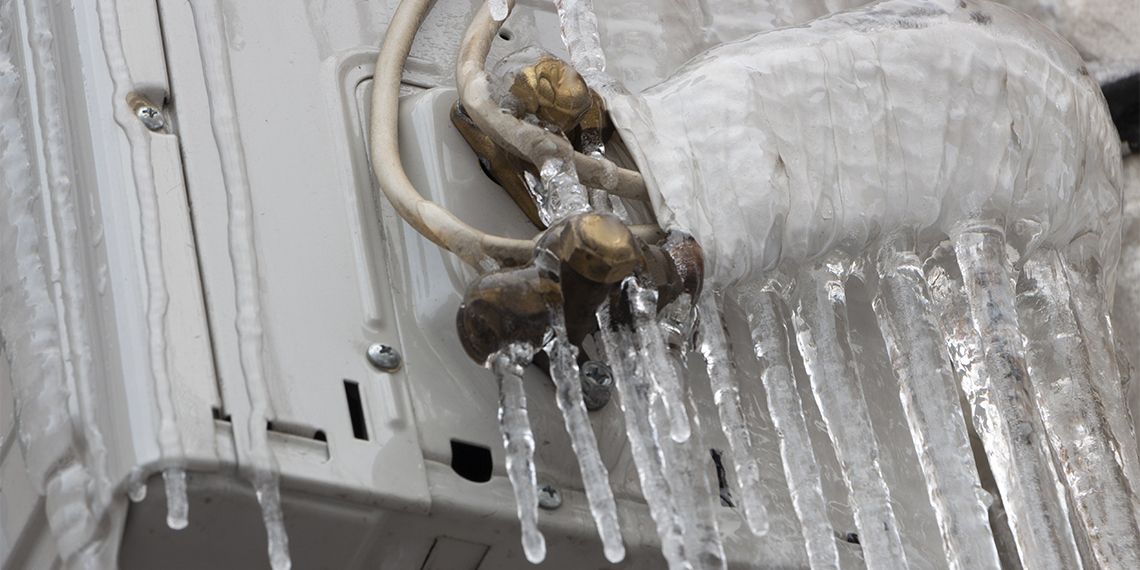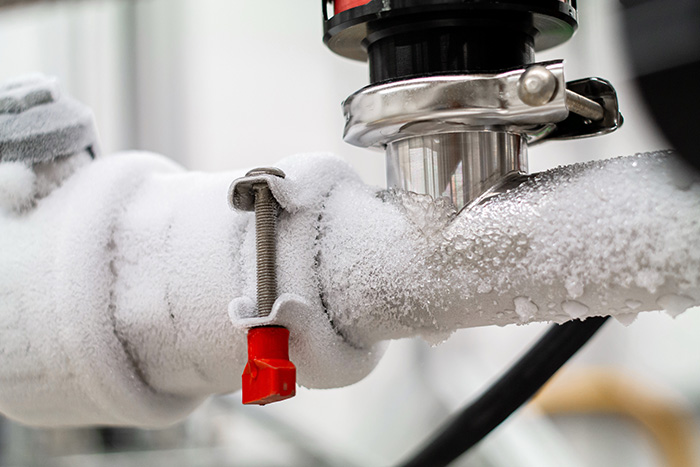The article following next on the subject of Why Is Ice On My Outside Air Conditione is fairly engaging. Try it and make your own personal conclusions.

Introduction
Discovering that your a/c pipe is frozen can be concerning, specifically throughout hot summer season when you count on your air conditioner the most. Recognizing what to do in such a circumstance is essential to prevent more damage to your air conditioning system and guarantee your convenience indoors.
Understanding the Causes
A number of elements can add to the freezing of an AC pipeline. Comprehending these causes can assist you resolve the concern effectively.
Absence of Airflow
One usual cause of a frozen air conditioning pipeline is inadequate air flow. When the air movement over the evaporator coil is limited, it can cause the coil to go down below freezing temperature level, resulting in ice formation on the pipe.
Reduced Refrigerant Levels
Inadequate refrigerant degrees in your air conditioner system can likewise cause an icy pipe. Reduced cooling agent levels can trigger the pressure in the system to drop, resulting in the freezing of moisture on the evaporator coil.
Winter Conditions
In chillier climates, freezing temperatures outside can add to the freezing of air conditioning pipelines. If your air conditioner device is not appropriately shielded or if there are leakages in the ductwork, chilly air can infiltrate the system, triggering the pipeline to ice up.
Dirty Air Filters
Dirty or clogged air filters can restrict air movement in your AC system, bring about different issues, consisting of a frozen pipe. It's necessary to replace or clean your air filters routinely to make sure correct airflow and prevent ice accumulation.
Signs of a Frozen AC Pipe
Recognizing the indicators of a frozen air conditioner pipe is essential for punctual action.
Lowered Airflow
If you observe a significant reduction in air movement from your vents, it can indicate a frozen pipe.
Ice Buildup on the Pipe
Noticeable ice accumulation on the cooling agent line or the evaporator coil is a clear indicator of an icy AC pipe.
Weird Sounds from the Unit
Uncommon noises, such as hissing or bubbling, coming from your air conditioning system can signify that there's ice existing on the pipeline.
Immediate Actions to Take
When faced with an icy a/c pipeline, it's important to act swiftly to stop further damage to your cooling system.
Switching off the air conditioning
The very first step is to turn off your ac system to stop the system from running and exacerbating the issue.
Checking for Blockages
Examine the area around the indoor device for any type of obstructions that might be obstructing airflow, such as furniture or curtains.
Thawing the Pipe
You can make use of gentle techniques like putting towels soaked in cozy water around the icy pipe to aid thaw it gradually.
Safety nets
Taking preventive measures can help avoid future events of an icy a/c pipe.
When DIY Methods Fail
If your attempts to thaw the pipeline or address other problems are unsuccessful, it's time to contact a specialist.
Value of Hiring a Professional HVAC Technician
A qualified HVAC service technician has the experience and tools required to diagnose and fix concerns with your air conditioning system safely and properly.
Regular Maintenance Checks
Arrange routine upkeep consult a professional HVAC specialist to make certain that your air conditioner system is running efficiently.
Transforming Air Filters
Consistently replace or clean your air filters to prevent airflow constraints and maintain ideal efficiency.
Shielding Exposed Pipes
If your a/c pipelines are exposed to cool temperature levels, take into consideration insulating them to stop freezing throughout winter months.
Seeking Professional Help
If DIY techniques fall short to deal with the concern or if you're uncertain regarding how to proceed, it's ideal to look for aid from a certified HVAC technician.
Verdict
Handling an icy AC pipeline can be a frustrating experience, but recognizing how to respond can help minimize damage and restore comfort to your home. By understanding the causes, identifying the indicators, and taking prompt activity, you can successfully deal with the concern and stop future incidents.
What to Do If Your AC Line Is Frozen
Make Sure All Supply and Return Air Vents Are Open
If you notice problems with airflow, the first thing you should do is check your supply and return vents. Supply vents distribute clean, conditioned air throughout your home. As this air becomes stale, it’s pulled into the return vent, where it’s reconditioned before being sent back out through the supply vent.
When these vents are closed, air won’t flow in the home. Before examining your AC, check the vents in every room and ensure they’re all open.
Check for a Dirty Air Filter
Another possible cause of limited airflow is a dirty air filter. Your air conditioner’s filters catch elements you don’t want to breathe in, such as dirt and dust. Over time, filters can become clogged, ultimately blocking air from flowing in and out. The lack of airflow can then cause the entire coil to freeze and will completely restrict any air from moving through it. The AC may need to be powered off for one to two days to allow the coil to thaw after replacing the filter to allow proper functioning of the unit. This debris can also accumulate on your AC’s evaporator coil, requiring a more serious repair. In general, air filters should be cleaned regularly (about every two weeks).
Assess Your Outdoor Unit
In addition to checking your AC, assessing the outdoor unit is a good idea. Also known as the condensing unit, it works with your interior unit to release heat outside. An issue with the outdoor unit can result in rising internal temperatures.
Overgrown Shrubs or Clogged Leaves
From leaves and twigs to shrubs and debris, there’s no shortage of outdoor elements that can accumulate around your condensing unit. When these elements get lodged inside the unit, they can block airflow. Fortunately, removing the blockage can solve the problem.
Sounds of a Broken Fan
Shrubs and leaves aren’t the only things that can impede your outdoor unit’s airflow. If the fan is broken, the unit won’t be able to properly get rid of heat — which means the internal temperature won’t go down. First, make sure the fan is spinning. If it is, check for the following sounds of a broken fan:
Buzzing Rattling Screeching Hissing Clicking Preventative Measures
Nobody wants to deal with a frozen AC line. In addition to causing problems with your air conditioner, they require professional repairs. On the bright side, there are preventative measures you can take to help ensure this issue doesn’t arise in the first place.
https://www.coopergreenteam.com/blog/what-to-do-if-ac-line-frozen

I was shown that editorial on Why Is Ice On My Outside Air Conditione through a good friend on our other web address. Do you know about somebody who is in the market for the niche? Be sure share it. Thanks for your time. Visit again soon.
Explore Now